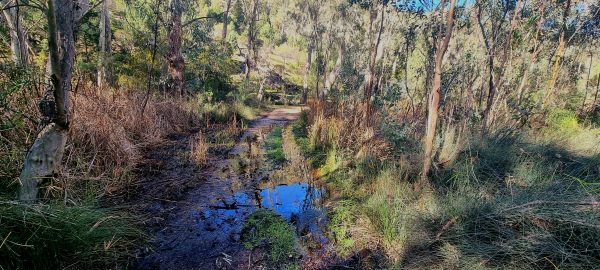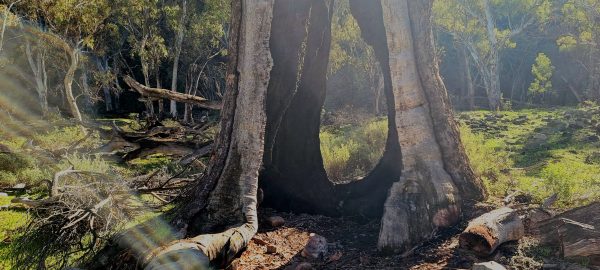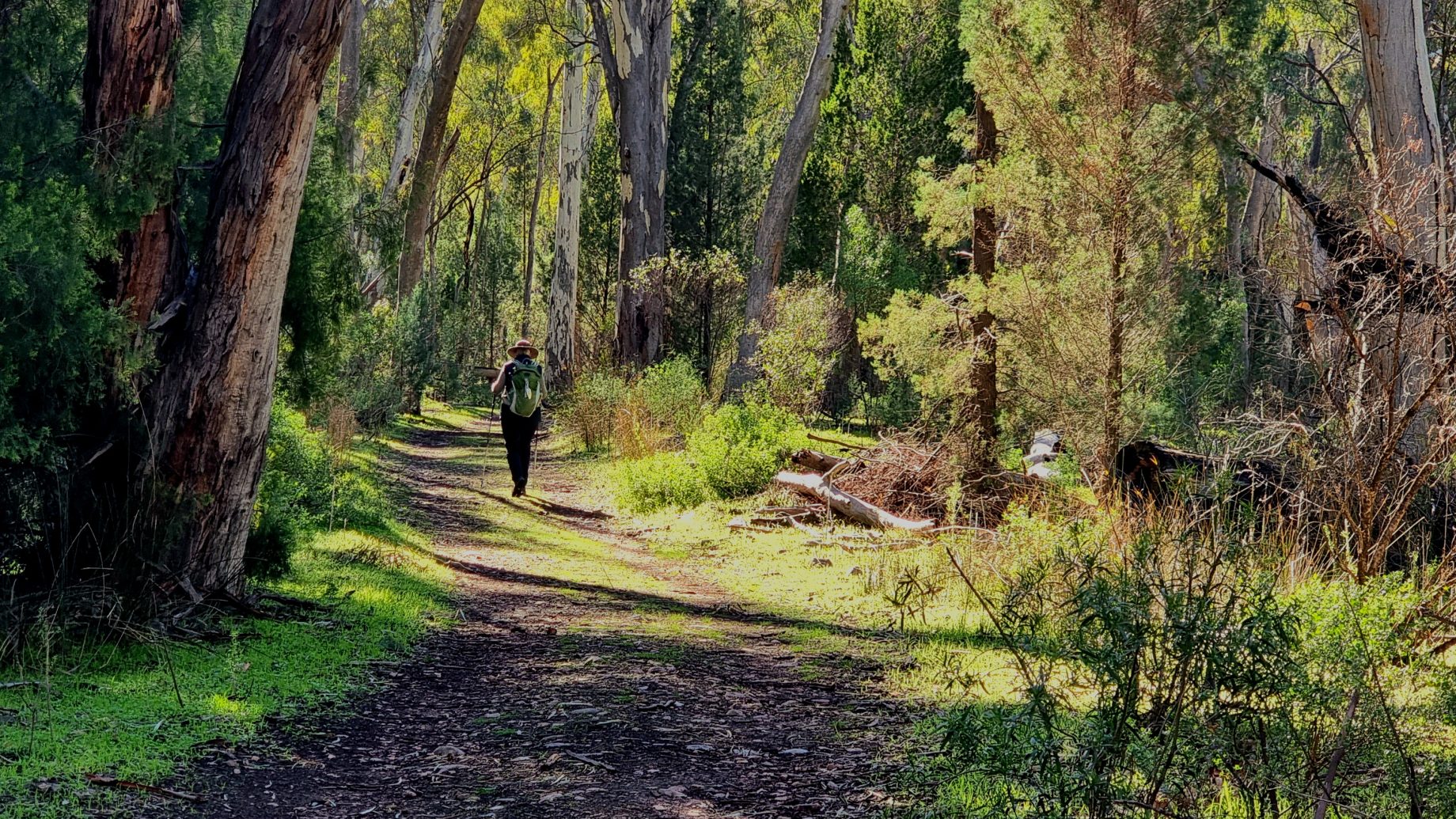A lone magpie found it necessary to welcome in another day with a lengthy rendition of birdsong that eventually encouraged a large cacophony of kookaburras to join in. Needless to say this had us (and fellow campers) up and about soon enough.
It was a cloudless sky overhead that greeted us as we emerged from the cosy confines of the Tvan. The air still had a chill in it as the sun climbed to make an appearance over the Mount Remarkable range to the east. Chris set up our free-standing solar panel to capture the sun’s rays. This solar panel compliments the one fixed to the roof of our Tvan, giving us a total of 320 watts of solar panels pointed towards the sun.
Our camping neighbours gradually began appearing from their tents, caravans and onsite cabins. It has been a few years since we last stopped here; when we read the facilities had been given a major makeover we were inspired to return. The number of people camping here in winter is an endorsement of how popular it is. We can only guess how busy it might be in the peak season.
We had come here to hike, so after breakfast we pulled on the walking boots and headed to the information board to select today’s walk. Sugar Gum Lookout was selected as today’s challenge – at 8kms it would be a good first walk for us, after sitting in the Prado for 2 days.
Mt Remarkable National Park is located in the southern Flinders Ranges and is often overlooked, with the better known central Flinders Ranges (including Wilpena Pound) the main draw card to the area. Beyond that are the northern Flinders Ranges and the Gammon Ranges – before salt lakes, jump-ups and desert country dominate the landscape.
The majority of walks that start from the Mambray Creek campground initially head in an easterly direction, following the (mostly dry) creek. At various stages the individual walks split from the main path and head up various gullies and disappear out of sight.




The walk to Sugar Gum Lookout continued upstream of Mambray Creek to Scarfe’s Hut, a restored shepherd’s hut (built when shepherds tended flocks of sheep; prior to fences becoming commonplace). Each day the shepherd would allow the sheep to graze the surrounding hills before rounding them up at night, keeping them in a small yard near the hut where they could be watched over.
Sugar Gum Lookout was at the end of a steep climb. It provided views that overlooked the valley we had walked up. We stopped, found a comfortable rock to sit on, caught our breath and enjoyed morning tea while enjoying the views and quietness of the surrounds.


If we continued westward on the track from Sugar Gum Lookout, we would eventually up on the eastern side of the National Park, some 26kms away. We retraced our steps down the steep hill, following the Mambray Creek track through impressive stands of river red gums that looked to have been around for many years.


Apparently this valley had been leased by a farmer for the purpose of logging the river red gums back in the 1800s. Armed with that knowledge, the larger gums were unlikely to be more than 150 years old.
Signs around the campground advise that the park rangers conduct feral eradication programs throughout the year and campers should expect the sound of gun shots at any time. Nearing the end of our walk, our attention was drawn to the bleating sound of a young goat reaching out for its mother. As we scanned the hillside a number of (predominantly black) goats came into view. No gun shots were heard but it will only be a matter of time, given their proximity to the ranger offices nearby. Feral goats have been a concern in the Flinders Ranges for many years – we first came here with Max, Simon and Tim in the late 1980s and they were a problem then.
